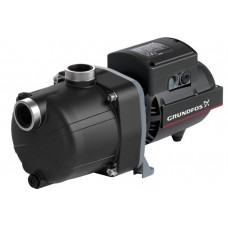LLigetfa
DIYer, not in the trades
Measuring the amps drawn should be a good indicator as a hole in the pipe would be moving a lot of water. A pump gunked up with iron or worn volutes would draw less amps.
Measuring the amps drawn should be a good indicator as a hole in the pipe would be moving a lot of water. A pump gunked up with iron or worn volutes would draw less amps.
Clamp-around ammeter, clamped around one power wire, where there is easy access. These are much cheaper than they used to be. https://en.wikipedia.org/wiki/Current_clampthose worn volutes as you call them, they get build up so fast? we talk about a 11 month old grundfos pump.
how I can measure the amps?
Usually two separate issues. Gunked up from iron OR worn volutes. Iron that may be precipitated by "shocking" a well could stick together inside the pump. It does not happen often. Worn volutes could be from severe up-thrust or heavy sediment. Sediment would likely take longer than 11 months to wear them out and that much sediment should create issues elsewhere in the system.those worn volutes as you call them, they get build up so fast?
There is only one check valve and that one my plummer change today.Usually two separate issues. Gunked up from iron OR worn volutes. Iron that may be precipitated by "shocking" a well could stick together inside the pump. It does not happen often. Worn volutes could be from severe up-thrust or heavy sediment. Sediment would likely take longer than 11 months to wear them out and that much sediment should create issues elsewhere in the system.
Upthrust could be an issue with a topside check valve as the pump starts without the resistance of backpressure. Is(are) there a check valve(s) other than the one on the pump? If so where and how many?
As valveman said, your pump has a built-in check valve. Changing your above-ground check valve is a waste of money. Clearly it is holding. Removing it, or removing its inside poppet, could be worthwhile.There is only one check valve and that one my plummer change today.
If the plumber changed it, I'm guessing it is not the one built into the pump, so my guess is you have two check valves. Where is that check valve the plumber changed, down on the pump or up top?There is only one check valve and that one my plummer change today.
my plummer only change down on the pump, not the build in, he cant he said, so I will send the motor to a small shop and they can look at it.If the plumber changed it, I'm guessing it is not the one built into the pump, so my guess is you have two check valves. Where is that check valve the plumber changed, down on the pump or up top?
my plummer only change down on the pump, not the build in, he cant he said, so I will send the motor to a small shop and they can look at it.
If the only check valve is at the pump, that check valve is good.If I am not using any water, the pressure doesnt drop at all.
now a shop have open up the pump, and its totally ruin, he said that the pump have run without water, I thought there were a safety to off the pump if no water is coming, but I guess not.
how to pump them dry? shouldnt the pumps safety off the pump if no water?Sorry! But pumps won't last very long if you pump the well dry.
Grundfos JPC-4 I have this https://product-selection.grundfos....id=GMA&productnumber=98629751&qcid=1084219790

So tell us about where the water comes from. Are you sucking water from a well, or is the water coming from an above-ground tank, or is the input coming from a city water pipe?yeah not sure what it means, but yes I have this one, and Grundfos tells me its should shut down, if no water is coming, not sure if its true
its input coming from a city water pipe?So tell us about where the water comes from. Are you sucking water from a well, or is the water coming from an above-ground tank, or is the input coming from a city water pipe?
This is awkward, but...
It looks like you're using an ad blocker. We get it, but (1) terrylove.com can't live without ads, and (2) ad blockers can cause issues with videos and comments. If you'd like to support the site, please allow ads.
If any particular ad is your REASON for blocking ads, please let us know. We might be able to do something about it. Thanks.